The fascinating history of fruit carving in Thailand
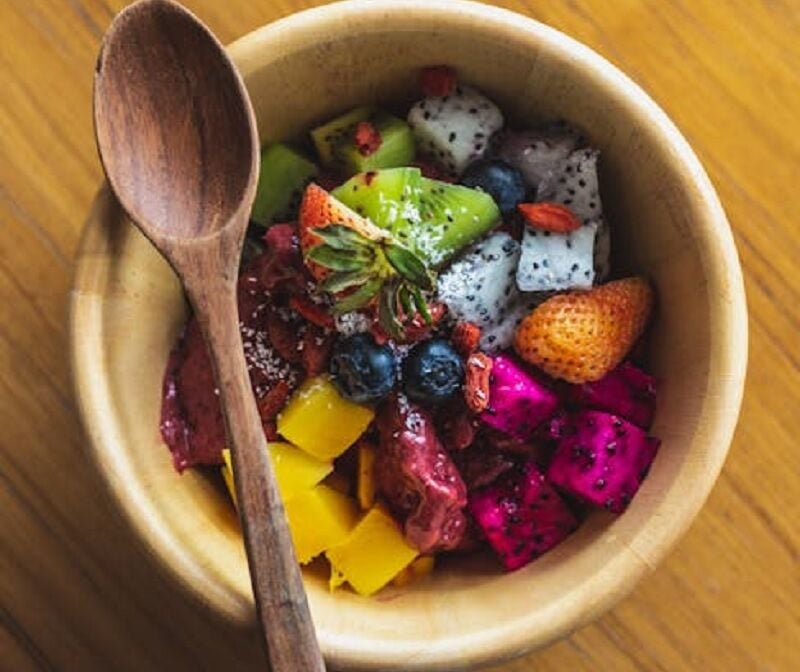
Thailand’s fruit carving, or kae sa lak polamai, is a tradition steeped in history, once a staple at every major event and banquet. This intricate art form, which sees fruits and vegetables transformed into breathtaking floral motifs, has long distinguished Thai culture from its neighbours. The Chinese may have mastered human figures and animals, and the Japanese patterns, but Thais have always excelled in creating exquisite floral designs.
However, this cherished art is facing a decline. Once a symbol of Thai culinary prestige, fruit carving is now considered a dying art, with fewer people willing to learn and preserve this unique tradition. Despite its rich heritage, the global spotlight often overlooks Thailand’s contribution, instead focusing on its emergence in the West.
Understanding the history of fruit carving in Thailand is more than a journey through its culinary past; it’s a call to recognise and preserve a form of art that is intrinsically linked to Thai culture and identity. Let’s delve into the origins, evolution, and current state of this exquisite craft that once adorned every Thai banquet table.
History of fruit carving in Thailand
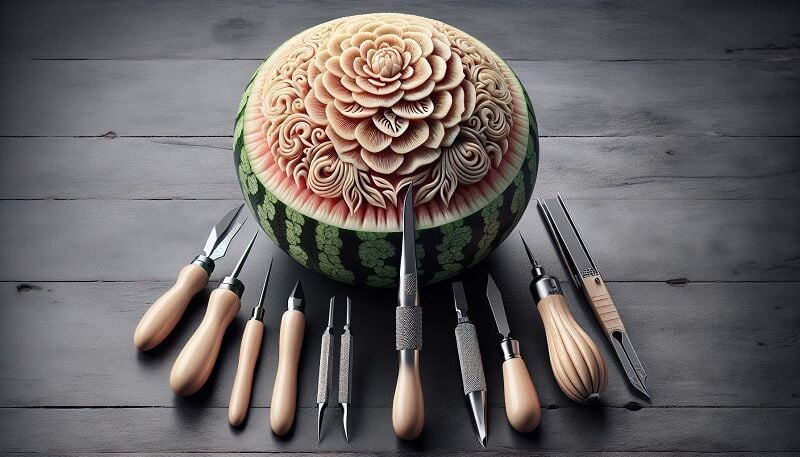
Ancient origins
The tradition of fruit carving in Thailand dates back to the 14th century, during the Sukhothai era. This intricate art was not born out of necessity but as a means to beautify royal feasts and religious ceremonies. A notable instance is the creation of a floating lantern by a concubine, adorned with carvings of flowers and birds from fruit. It’s believed that these early carvings served dual purposes: decoration and a demonstration of skill and creativity. This period marked the commencement of food carving as an esteemed art form within Thai culture, setting the foundation for its evolution.
Royal traditions
In royal settings, food carving was more than just an aesthetic practice; it symbolised refinement and the sophistication of the royal court. Detailed carvings were often used to tell stories or convey messages, as in the legend where a green melon carved with the king’s life story reconnected him with his long-lost mother. Such narratives illustrate the profound significance of fruit carving, transforming mere edibles into vessels of royal lore and heritage. This deep-rooted tradition highlights the integral role of food carving in celebrating and preserving Thai history through the ages.
Modern revival
Despite its dwindling prevalence in day-to-day life, efforts are underway to breathe new life into Thailand’s fruit carving tradition. Initiatives aimed at reviving this art form include incorporating it into cultural events and team-building activities, especially those catering to a mix of locals and foreigners. This modern approach not only fosters appreciation among younger generations but also presents an opportunity for cultural exchange. Additionally, the focus on using traditional designs in contemporary carvings serves as a bridge between Thailand’s rich past and its present, ensuring the survival and relevance of food carving in Thai society.
Techniques of fruit carving
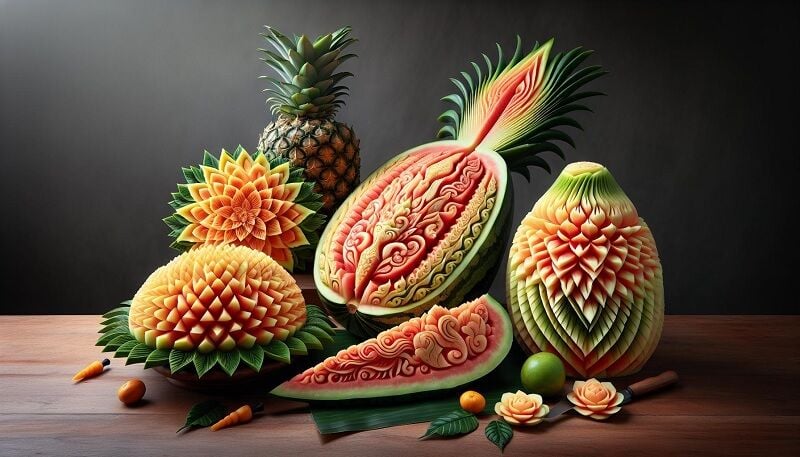
Tools required
Before diving into the intricate world of fruit carving in Thailand, you’ll need the right tools. Precision is key, hence, specialised knives are paramount. These include the paring knife, scalpel-like carving knife, and U-shaped garnishing tools. Each serves a unique purpose, from peeling to intricate detail work. It’s not just about having these tools; mastering their use elevates your carvings from simple to spectacular.
Basic carving methods
Embarking on your fruit carving journey starts with mastering the basics. First, selecting your fruit is critical. Not all fruits are equal for carving. Watermelons, papayas, and melons generally provide a robust canvas. The initial step involves peeling your fruit, proceeding with shallow cuts to outline your design. Think of it as sketching on canvas but with fruit. Techniques such as skin carving showcase contrasts between the fruit’s flesh and its skin, creating visually appealing designs. Simple floral patterns are popular among beginners, offering a gentle introduction to this art.
Advanced sculpting techniques
Once comfortable with basic methods, you’re ready for advanced sculpting techniques that delve into the heart of food carving in Thailand. Three-dimensional carving demands imagination, transforming fruits into intricate floral bouquets or elaborate scenes. This requires a steady hand and patience, gradually removing fruit layers to add depth and realism to your creation. Thai carving, identifiable for its exquisite detail and elegance, often depicts scenes from nature or mythology, requiring years of practice to perfect. Both skin and three-dimensional carving techniques are fundamental, yet it’s the artist’s precision and creativity that turn a piece of fruit into a masterpiece.
Popular fruits for carving
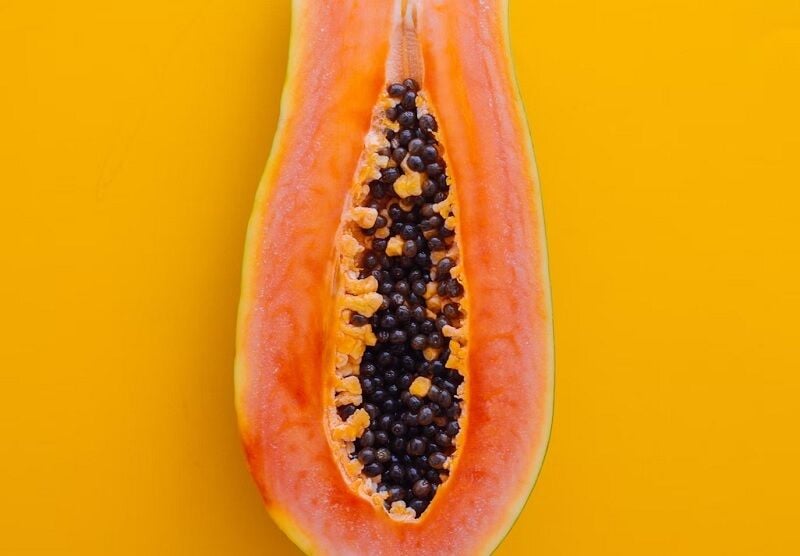
Watermelon
Watermelon stands as a pinnacle of food carving in Thailand. Its large size and vibrant red flesh afford carvers a vast canvas for intricate designs. The contrast between the green outer skin and the inner red fruit highlights the precision of Thai carving techniques. You’ll find that watermelons are particularly favoured for their ability to retain moisture, ensuring that the carved creations maintain their fresh appearance for longer periods. Whether it’s for festivals or culinary displays, watermelons embody the essence of Thai food carving, showcasing elaborate patterns and themes.
Papaya
Papaya, with its soft, buttery texture, presents a unique challenge and opportunity for fruit carvers. Unlike watermelon, papaya’s uniform colour requires a focus on depth and shadow to bring designs to life. This fruit is often used in Thailand not only for its decorative appeal but also for the cultural significance it holds. Carving papaya demands a high level of skill to avoid puncturing its softer flesh, making it a testament to an artisan’s dexterity and patience. Its versatility also extends beyond visual art, as the fruit itself is a staple in Thai cuisine, bridging food carving traditions with everyday culinary practices.
Pineapple
Pineapple offers a distinct texture and aesthetic for food carving aficionados. The rugged exterior and vibrant yellow flesh provide a striking contrast that can enhance any decorative fruit display. In Thailand, pineapples are not just carved for their appearance but are also symbolic, often used in ceremonies and celebrations for their association with prosperity and fortune. The complexity of carving through a pineapple’s tough exterior requires precision tools and advanced techniques, making it a fruit often tackled by more experienced carvers. The end result, however, is always a captivating display of Thai craftsmanship and ingenuity.
Cultural significance
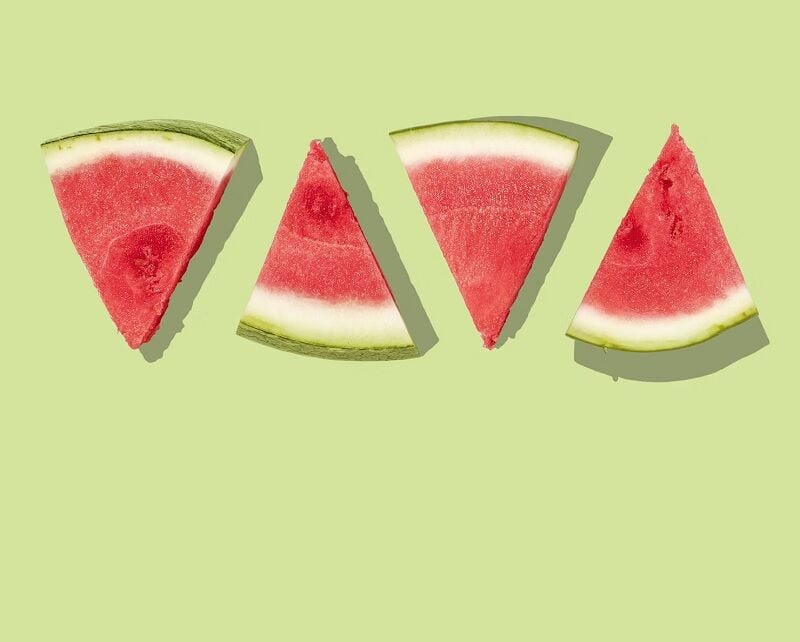
Symbolism in Thai culture
Food carving in Thailand isn’t just an art; it’s a symbolic tradition woven into the fabric of Thai culture. Each carved piece tells a story, reflecting beliefs, traditions, and the Thai way of life. Watermelons carved with intricate flower designs, for instance, symbolize beauty and life, mirroring Thailand’s lush landscapes. Birds and floral patterns, common themes in Thai carving, represent freedom, nature, and spiritual beliefs. Through food carving, Thai artists express not only their creativity but also their cultural identity and reverence for nature.
Celebratory occasions
In Thailand, food carving transforms ordinary events into celebratory feats. The Loi Krathong Festival, celebrated each November, showcases carved fruits among its myriad of decorations. The festival lights up rivers with floating lanterns, among which intricately carved fruits pay homage to the water spirits, blending art with spiritual offerings. Weddings, royal banquets, and even everyday gatherings often feature food carving, turning meals into visual masterpieces. This tradition highlights the importance of beauty and craft in celebrating life’s moments, both big and small.
Educational value
The art of food carving holds significant educational value in Thailand. It’s not just about creating beautiful objects; it’s about preserving a centuries-old tradition. The practice is introduced to young Thais, often as part of the primary school curriculum, instilling in them an appreciation for their cultural heritage. Through food carving, students learn patience, precision, and artistic expression. This art form teaches the value of meticulous attention to detail and the importance of preserving cultural practices for future generations.
By engaging in food carving, you’re stepping into a realm of cultural expression that extends beyond mere aesthetics. It’s an immersive experience, offering a glimpse into the heart of Thai culture, where every slice and carve tells a story of beauty, tradition, and a deep-rooted sense of identity.
Considering the above-shared details, You might want to explore the breakfast culture of Chiang Mai, Chiang Mai’s breakfasts are one of its cuisine highlights, with a wide range of cafés and restaurants serving delicious breakfast food. Chiang Mai’s breakfast scene is extraordinarily big, out of the hundreds of choices in this post are five of the best; Sun Rays Café, Good Day Breakfast Café, Café de Thaan Aoan, Chiang Mai Breakfast World, and My Secret Café in Town. Each has its own distinct charm and large menu.
Latest Thailand News
Follow The Thaiger on Google News:


























